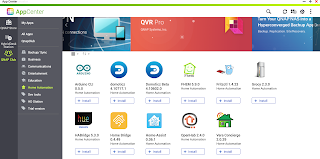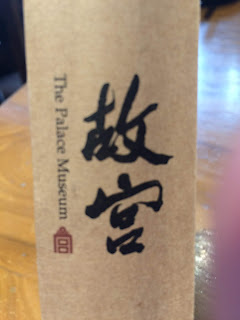QNAP Security provides Linux-based NVR solution to the Japanese Communication International School
QNAP Security provides Linux-based NVR solution to the Japanese Communication International School
Application: Large office
Introduction
Every year approximately 800 students from around the world travel to study at Japanese Communication International School (JCIS) in Osaka. The security of these international elites and the campus staff is the top priority of JCIS’s IT Department; however, this is not an easy task. With an increasing number of buildings constructed and separated by functions, the most basic surveillance provision came to require the integration of a new security system with the existing network structure. The goal of this hybrid is to enhance remote access capabilities to the system’s database and to increase overall data protection.
Missions "Initially we ran a PC-based NVR system on Panasonic surveillance cameras; however, this meant that we were subject to certain risks since PC systems cannot automatically restart after a power outage. On multiple occasions, the video recording was interrupted and we lost important data due to hard drive failure," said Yasushi Nakaguro, Project Manager at R.O.D. "In 2009, after four years of employing this imperfect system, we decided to look for an alternative security solution. We sought out QNAP Security, a standalone NVR manufacturer known for the stability of their products and excellent post-sales support. QNAP utilized their VioStor-8024 surveillance system at 300 Mbps to simultaneously record and provide live view of up to 24 IP cameras. On top of that, the VioStor-8024 NVR offered huge storage capacity through 8 hard drives with RAID 1, 5, 5+hot spare, 6, and 6+ hot spare supports. We created RAID 1 disk volumes on the NVR, which protected the video data against one hard drive failure in each pair of hard drives. They effectively solved all the data storage instability issues we faced with the original security system."
"Initially we ran a PC-based NVR system on Panasonic surveillance cameras; however, this meant that we were subject to certain risks since PC systems cannot automatically restart after a power outage. On multiple occasions, the video recording was interrupted and we lost important data due to hard drive failure," said Yasushi Nakaguro, Project Manager at R.O.D. "In 2009, after four years of employing this imperfect system, we decided to look for an alternative security solution. We sought out QNAP Security, a standalone NVR manufacturer known for the stability of their products and excellent post-sales support. QNAP utilized their VioStor-8024 surveillance system at 300 Mbps to simultaneously record and provide live view of up to 24 IP cameras. On top of that, the VioStor-8024 NVR offered huge storage capacity through 8 hard drives with RAID 1, 5, 5+hot spare, 6, and 6+ hot spare supports. We created RAID 1 disk volumes on the NVR, which protected the video data against one hard drive failure in each pair of hard drives. They effectively solved all the data storage instability issues we faced with the original security system."
System Overview
Back in 2004 when their first building was constructed, JCIS had worked with a security consultancy to install 6 Panasonic HCM-527s. These cameras possessed wide angle lenses that allowed them to cover the three major entrances of the building. In addition, 24 HCM-715s were installed in the classrooms. In 2009, JCIS also added Sony RZ50N, cameras capable of high speed 340-degree panning and 90-degree tilting. With the support for these unique PTZ features by the QNAP NVR, these IP cameras can now be fully utilized. Now, coupled with QNAP's VioStor NVR, the megapixel recordings of these cameras can be steadily transmitted and stored to the NVR at the same time.
"For this particular project, it was important to stabilize all aspects of security from compression rate, transmission, to hardware throughput due to the fact that the central control room is located in a separate building. VioStor’s CPU and hard drive capabilities solved this problem,” added Yasushi. "The previous incidents of video data loss also prompted us to look into the Linux-based NVR solution supporting RAID from QNAP, which provided reliable data storage with all data simultaneously written to both hard drives in each pair in a duplicative way.
Future Plan
Andrew Yu, Product Manager at QNAP, stated that "Kokisai Tsushin Co., Ltd., the parent corporation of JCIS, now plans to install QNAP NVR servers in multiple subsidiaries by 2012. Coupled with the Linux-based network security system, the central control room in the headquarters will ultimately be able to monitor all video, audio, events, and alarms from different locations. This is achieved by VioStor NVR’s multi-server monitoring feature, which allows simultaneous 128-channel monitoring from multiple VioStor NVR servers."
Introduction
Every year approximately 800 students from around the world travel to study at Japanese Communication International School (JCIS) in Osaka. The security of these international elites and the campus staff is the top priority of JCIS’s IT Department; however, this is not an easy task. With an increasing number of buildings constructed and separated by functions, the most basic surveillance provision came to require the integration of a new security system with the existing network structure. The goal of this hybrid is to enhance remote access capabilities to the system’s database and to increase overall data protection.
Missions
 "Initially we ran a PC-based NVR system on Panasonic surveillance cameras; however, this meant that we were subject to certain risks since PC systems cannot automatically restart after a power outage. On multiple occasions, the video recording was interrupted and we lost important data due to hard drive failure," said Yasushi Nakaguro, Project Manager at R.O.D. "In 2009, after four years of employing this imperfect system, we decided to look for an alternative security solution. We sought out QNAP Security, a standalone NVR manufacturer known for the stability of their products and excellent post-sales support. QNAP utilized their VioStor-8024 surveillance system at 300 Mbps to simultaneously record and provide live view of up to 24 IP cameras. On top of that, the VioStor-8024 NVR offered huge storage capacity through 8 hard drives with RAID 1, 5, 5+hot spare, 6, and 6+ hot spare supports. We created RAID 1 disk volumes on the NVR, which protected the video data against one hard drive failure in each pair of hard drives. They effectively solved all the data storage instability issues we faced with the original security system."
"Initially we ran a PC-based NVR system on Panasonic surveillance cameras; however, this meant that we were subject to certain risks since PC systems cannot automatically restart after a power outage. On multiple occasions, the video recording was interrupted and we lost important data due to hard drive failure," said Yasushi Nakaguro, Project Manager at R.O.D. "In 2009, after four years of employing this imperfect system, we decided to look for an alternative security solution. We sought out QNAP Security, a standalone NVR manufacturer known for the stability of their products and excellent post-sales support. QNAP utilized their VioStor-8024 surveillance system at 300 Mbps to simultaneously record and provide live view of up to 24 IP cameras. On top of that, the VioStor-8024 NVR offered huge storage capacity through 8 hard drives with RAID 1, 5, 5+hot spare, 6, and 6+ hot spare supports. We created RAID 1 disk volumes on the NVR, which protected the video data against one hard drive failure in each pair of hard drives. They effectively solved all the data storage instability issues we faced with the original security system."System Overview
Back in 2004 when their first building was constructed, JCIS had worked with a security consultancy to install 6 Panasonic HCM-527s. These cameras possessed wide angle lenses that allowed them to cover the three major entrances of the building. In addition, 24 HCM-715s were installed in the classrooms. In 2009, JCIS also added Sony RZ50N, cameras capable of high speed 340-degree panning and 90-degree tilting. With the support for these unique PTZ features by the QNAP NVR, these IP cameras can now be fully utilized. Now, coupled with QNAP's VioStor NVR, the megapixel recordings of these cameras can be steadily transmitted and stored to the NVR at the same time.
"For this particular project, it was important to stabilize all aspects of security from compression rate, transmission, to hardware throughput due to the fact that the central control room is located in a separate building. VioStor’s CPU and hard drive capabilities solved this problem,” added Yasushi. "The previous incidents of video data loss also prompted us to look into the Linux-based NVR solution supporting RAID from QNAP, which provided reliable data storage with all data simultaneously written to both hard drives in each pair in a duplicative way.
Future Plan
Andrew Yu, Product Manager at QNAP, stated that "Kokisai Tsushin Co., Ltd., the parent corporation of JCIS, now plans to install QNAP NVR servers in multiple subsidiaries by 2012. Coupled with the Linux-based network security system, the central control room in the headquarters will ultimately be able to monitor all video, audio, events, and alarms from different locations. This is achieved by VioStor NVR’s multi-server monitoring feature, which allows simultaneous 128-channel monitoring from multiple VioStor NVR servers."
Related link:












留言
張貼留言
發表一下意見,互動一下唄!